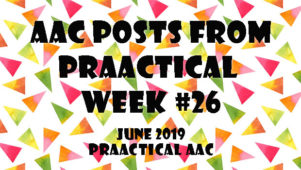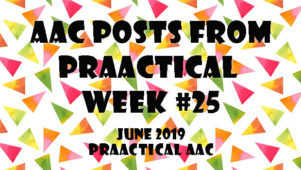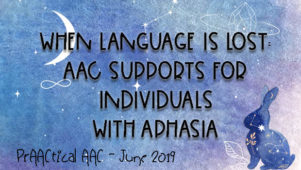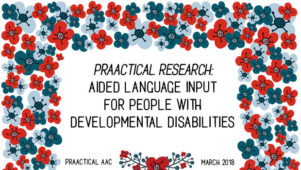Be Chatty: 5 Tips For Supported Conversations
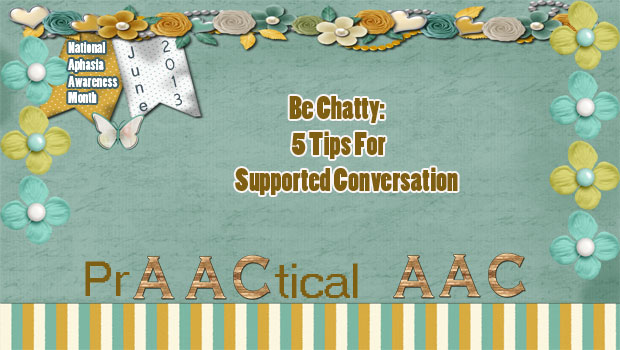
There are many strategies to support communication and conversation for individuals with significant aphasia. Conversation is about connecting with people. We engage in conversation about interesting and relevant experiences to help with connecting. To best connect and be part of conversation, there needs to be comprehension and expression from each communication partner. With aphasia, there is difficulty in these language areas, but it is not that language is lost, it is that it needs to be accessed differently. These quick start tips will support accessing conversation and connections.
- Write or Draw Key Words– When you are talking, write key words to support your spoken language.
- Gesture Key Words– When you are talking, supplement spoken language with gestures to illustrate a main point
- Show Related Photographs or Remnants– While you are talking, use photographs or some remnant of the an experience or event you are talking about.
- Written Choices to Participate– Provide written or drawn choices to decide topic of conversation, thoughts about the topic , preferences about the topic, etc.
- Use Visual Strategies to Organize– Use a variety of visual strategies to organize conversations. Consider rating scales to get degree of preferences or ideas on a topic, use diagrams to organize information about a topic in terms of past information, present or future ideas on an experience or topic. Include remnants or items from or about an event to increase engagement. These items can also be used to expressively to ‘say’ something about the topic.
These tips are from the work of Joanne P Lasker & Kathryn L Garrett. To learn more: Read Aphasia & AAC: Enhancing Communication Across Health Care Settings , or Garrett, K. L., & Lasker, J. P. (2007). AAC and severe aphasia: Enhancing communication across the continuum of recovery. Perspectives on Neurophysiology and Neurogenic Speech and Language Disorders, 17, 6–15.
Filed under: PrAACtical Thinking
Tagged With: aphasia, augmented comprehension, augmented input, Supported Communication
This post was written by Robin Parker

